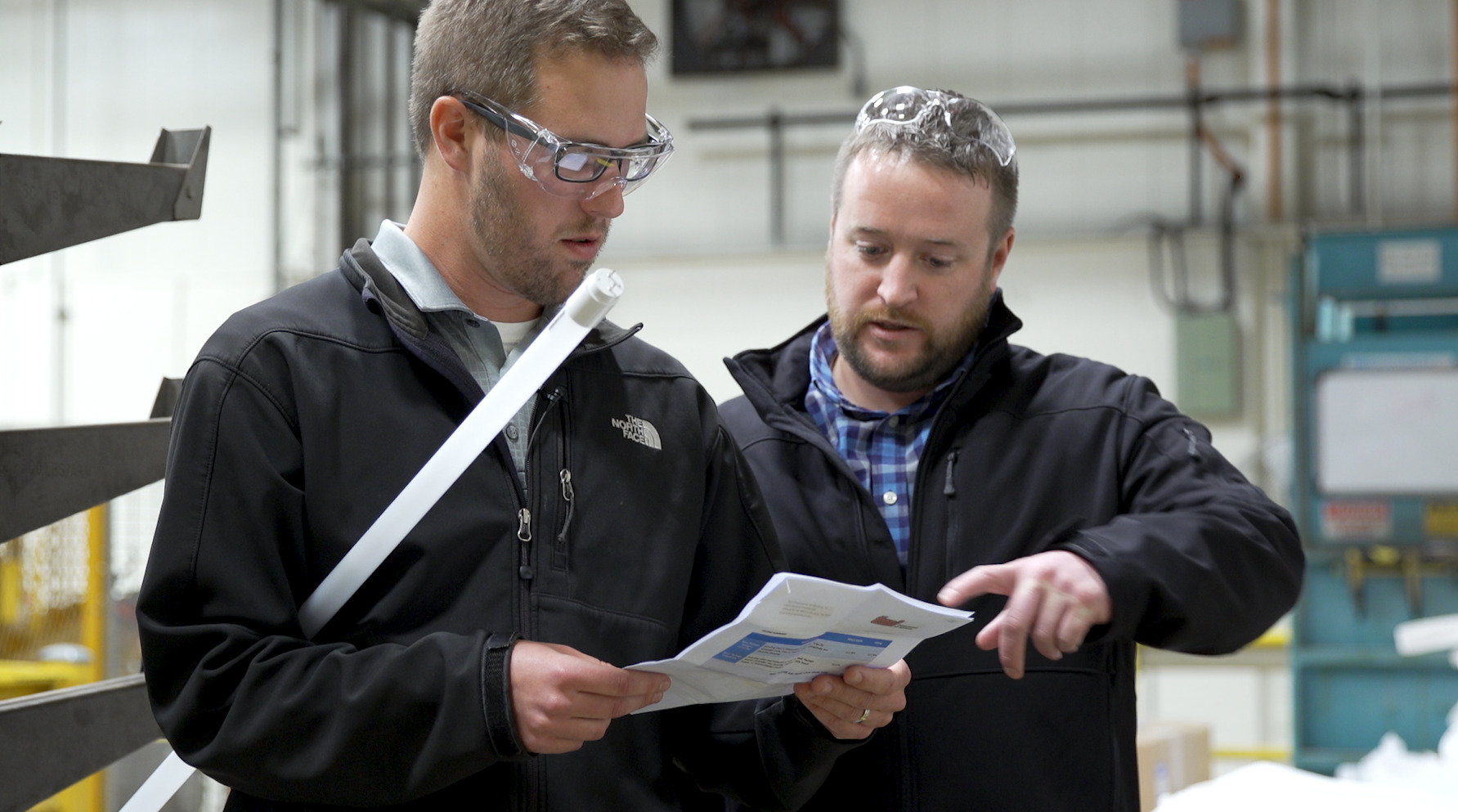Plan calls for making many small changes to create a big difference.
Amway has set a goal of shrinking energy consumption at its Ada, Michigan headquarters by 10 percent over the next five years.
Amway’s West Michigan campus used more than 72 million kilowatt hours of electricity in 2017, enough to power almost 9,000 homes. Half of that power comes from wind energy. Soon, solar power will be part of the renewable energy mix with the installation of solar panels on one of the buildings.
“There’s a lot of new technology coming out – green technology, wind power, the solar power – and we want to be sustainable,” explained Corey Gale, Amway Facilities Electrical Engineer.
Going hand in hand with transitioning to renewable energy sources is dialing up energy efficiency. Gale’s 11-person team has been tasked with finding ways to trim energy use.
“We use a lot of energy as a big site. We have electricity, we have steam, we have gas, we have water so we have all these different utilities that we can reduce,” Gale said.
So his team has focused on the biggest users of electricity in buildings: lighting, air compressors, and chillers that cool spaces.
Small changes add up
The first step began with having the utility company do an energy audit of facilities. As part of the process, the team reviewed records that identified which facilities consume more energy than others.
One unexpected discovery is that use was evenly split between office and manufacturing buildings. Traditionally, manufacturing plants have been bigger users since they house large machinery. The rise in electronics is one reason there has been an uptick in energy use in the office.
This analysis helped the team come up with a plan for reducing energy, such as:
- Replacing fluorescent lamps with efficient LED lights which cut energy use in half. It’s a costly investment up front because hundreds of ceiling fixtures need to be updated. Fortunately, Amway qualified for rebates through the utility.
- Adding controls and sensors so lights, heat and air conditioning weren’t running when buildings weren’t occupied with employees such as at night, weekends or holidays. Controls were also used to dim lamps when there was sun streaming through windows.
- The team does inspections of its industrial compressors and piping to find air leaks in tubing and hoses that can add up to costly energy drain, said Ben Preston, who works for Amway as an analyst for environmental health and safety.
“Just for an example, we’re looking at a cost of about $1,600 for an eighth-of-an-inch leak that goes one year without getting fixed,” Preston said.
Everybody can do their part
While the engineering and maintenance department has made some important changes, ultimately sustainability requires company-wide participation.
All Amway employees are being asked to do their part to reduce energy waste by taking a few key steps every day such as turning off lights and computers and unplugging electronics like phone chargers when not in use.
“We need everyone’s help in becoming more energy efficient,” Gale said.
The good news is the initial effort is paying off. Amway headquarters is expected to meet its first 2 percent goal in 2018.

